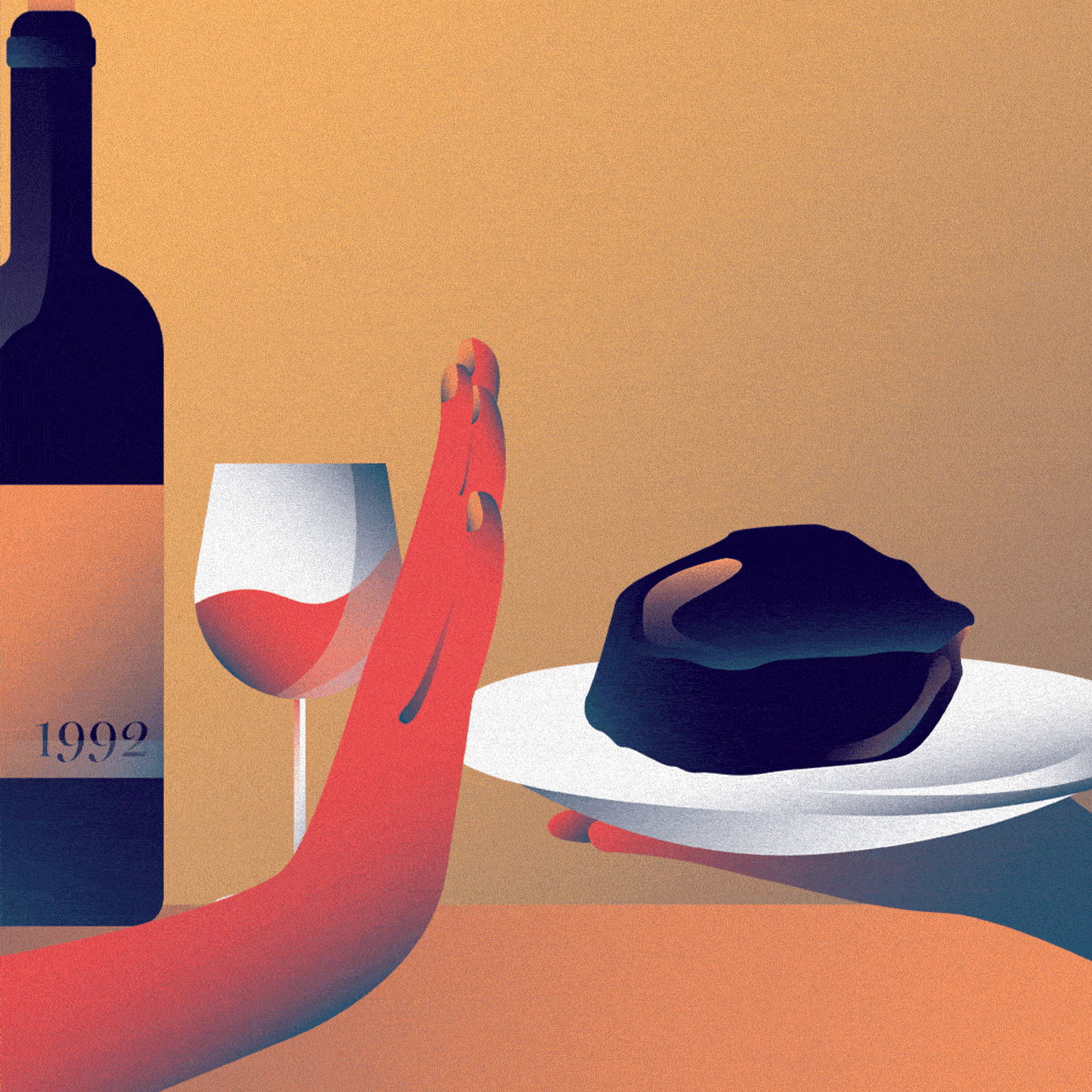Can food overpower, or even eclipse the pleasures of a well-aged bottle of wine? Pairings are such an enormous part of the lore and baggage of wine that, on its face, this seems a heretical question.
And yet, from Burgundy and Bordeaux to Chablis and Champagne, the greatest aged wines are complex and contemplative. Perhaps it’s better to appreciate their subtleties without disparate, competing flavors spilling across your table.
“Experiencing a great wine on its own is always a very unique and pure meeting,” Heinz Frishengruber, managing winemaker and technical director at Austria’s Domäne Wachau, says. “You are able to concentrate and focus on every detail about the wine, you find more single elements with more precision.”
Frishengruber also likes to change up the glassware as the wine evolves. He starts with a smaller glass “to get the first restrained aromas,” then later, at around the 10- to 20-minute mark, he’ll “change to a bigger glass and let the wine breathe more and give it more room to develop,” he says.
Raffaella Guidi Federzoni, export manager for Fattoria dei Barbi, echoes these pleasures of enjoying an aged wine without food. Describing a decades-old Brunello from that estate, she says, “It is wonderful to sip it and focus on the various layers of sensation that keep coming to your nose, palate, and mind.”
Mind? “Yes,” she adds, “because tasting an aged Brunello becomes an intellectual experience, not just a sensual one.”
June Rodil, MS, a partner at Goodnight Hospitality in Houston, offers a restaurant perspective. “I always want to take a moment with an older wine without food. The evolution of cuisine in a restaurant, especially in the U.S., is to have super-powerful flavors and textures. … It’s common to have an element of heat, fat, sweet, and acidity in one dish, and all of those elements screaming, albeit very harmoniously, at eleven.”
A caveat: First-growth Bordeaux from legendary vintages, as well as top Burgundy from the best producers, have a bit of an asterisk by them, Rodil says. “They’re like the J-Lo or Benjamin Button of wine or something. They seem younger and more fierce with time.”
Of course, being enthusiastic about drinking aged wines on their own doesn’t mean eschewing food pairing altogether. But with aged wines come some hazards. The first would be: How soon before you eat are you supposed to open the bottle, and how should you serve it?
If you’re itching to break out a decanter for your Brunello from the 1970s, Federzoni suggests you pump the brakes. “For me, to decant an old wine is a crime. It is like forcing an old and fragile man to speed up in a 100-meter race.”
And though shifting gears from old Brunello to aged Grüner Veltliner and Riesling from the Wachau would seem to necessitate a different approach, Frishengruber doesn’t decant the wine or open the bottle too early. Be cautious with a wine more than three decades old, he advises, and open it 30 to 60 minutes before drinking.
A restaurant setting, however, can make things tricky, especially when a sommelier is presented with a cellar treasure a customer has brought. Instead of stressing about the vintage, producer, condition, decanting, and glassware, Rodil takes a different approach.
“First and foremost, if someone brings a special bottle from their own cellar, I’m going to do whatever they want me to do to it, up to and including shaking the sh*t out of it and then serving it in a coffee cup,” she says. “It’s their wine, they know how it’s been cared for, and they are the masters of it, so I defer to what they want. If they ask me for a recommendation, then I am stoked to be part of the conversation.”
Once the wine has been served, consider that old wines can change the pairing dynamic. Frishengruber likes to bring aged white wines into territory usually reserved for reds, praising the match of a 15-year-old Grüner with osso buco, and an even older Riesling with Peking duck.
Rodil swoons over “old white Burgundy and the dankest Époisses on the planet. The oxidative qualities of the white Burg almost turn into a touch of sweetness to complement the dirty, sweaty, delicious nature of the runny Époisses,” she says.
While it’s true part of the pleasure of enjoying old wine is the context and history a vintage provides, and it’s easy to stress over planning a “perfect” moment for that special bottle, Federzoni suggests a more relaxed approach. “For sure, a wine with personality and identity, not manipulated in order to be always the same, shows different aspects if drunk with food or without. But this is not so important. The importance is in the experience to be remembered,” he says.
However, do give that well-cellared bottle a chance to shine on its own. As Rodil concludes: “That’s the magic behind old wines, after all. Long life, long story to tell on the palate. It’s nice to listen to it without any distractions.”
